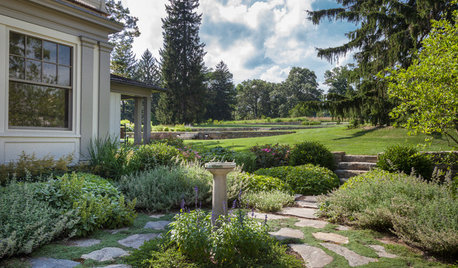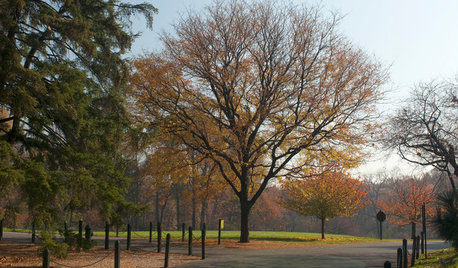wetlands help
haines9
20 years ago
Related Stories

LANDSCAPE DESIGNNative Plants Help You Find Your Garden Style
Imagine the garden of your dreams designed with plants indigenous to your region
Full Story
STANDARD MEASUREMENTSThe Right Dimensions for Your Porch
Depth, width, proportion and detailing all contribute to the comfort and functionality of this transitional space
Full Story
GARDENING AND LANDSCAPINGBe a Citizen Scientist to Help Wildlife, Learn and Have Fun Too
Track butterflies, study birds, capture stars ... when you aid monitoring efforts, you’re lending Mother Nature a hand
Full Story
TRADITIONAL HOMESHouzz Tour: Connecticut Farm Restored for Generations to Come
A man renovates his extended family’s stately farmhouse and land. Sustainable practices are used in gardens, wetlands and recreation areas
Full Story
INSPIRING GARDENSInside Houzz: A Waterfront Property Ditches the Grass for a Garden
New drought-tolerant plantings and outdoor gathering spaces help this California backyard take in the view without wasting space or water
Full Story
CHRISTMASReal vs. Fake: How to Choose the Right Christmas Tree
Pitting flexibility and ease against cost and the environment can leave anyone flummoxed. This Christmas tree breakdown can help
Full Story
EARTH DAYGrow a Beautiful Garden With Ecofriendly Greywater
Reducing home water waste means lower bills and a healthier planet. Here's how to set up a greywater home irrigation system that can help
Full Story
LIFEHow to Decide on a New Town
These considerations will help you evaluate a region and a neighborhood, so you can make the right move
Full Story
GARDENING GUIDESGreat Design Plant: Silphium Perfoliatum Pleases Wildlife
Cup plant provides structure, cover, food and water to help attract and sustain wildlife in the eastern North American garden
Full Story
ARCHITECTURE3 Home Design Solutions to Challenging Building Lots
You don't need to throw in the towel on an irregular homesite; today's designers are finding innovative ways to rise to the challenge
Full StorySponsored
Your Industry Leading Flooring Refinishers & Installers in Columbus
More Discussions







naturenut_pa
Iris GW
Related Professionals
70037 Landscape Architects & Landscape Designers · Barrington Landscape Contractors · Cudahy Landscape Contractors · East Lake-Orient Park Landscape Contractors · Forest Hills Landscape Contractors · Hayward Landscape Contractors · Pahrump Landscape Contractors · Yuba City Landscape Contractors · Maple Heights Landscape Contractors · Arroyo Grande Fence Contractors · Asheville Fence Contractors · Carson Fence Contractors · Cockeysville Fence Contractors · Albuquerque Siding & Exteriors · South Barrington Siding & Exteriorstreebeard
vbain
Jasper_Storm
pickwick
LauraZone5
oakfolk
madspinner
NOTHO__NANTUCKET
yvonnealh
osymandius1
treebeard
yvonnealh
joepyeweed